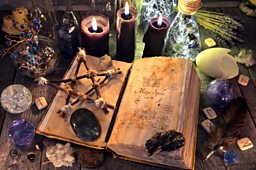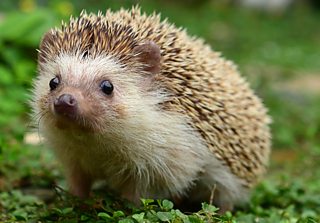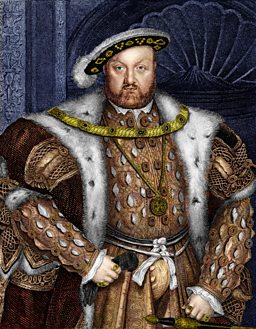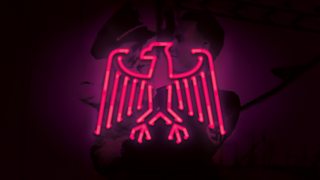Nine extraordinary facts about British witchcraft
In the ±«Óãtv Radio 4 dramatisation, H. P. Lovecraft’s cult novel The Case of Charles Dexter Ward gets a 21st-century makeover. Inspired by true-crime podcasts, this 10-part modern mystery concerns the inexplicable disappearance of a young man from an asylum and features demonic cults, otherworldly monsters and ancient witchcraft.
Sorcery is now considered the stuff of fiction, but this hasn’t always been the case. Here are nine magical facts about British witchcraft, wizardry and our history of the occult.

1. Witches used to be a good thing
The word witch is now associated with malevolent black magic but in medieval Britain white witches or “cunning folk” were an accepted part of village life. These pagan healers were skilled in the use of different plants and other ingredients as remedies for various ailments. They used potions and charms to other ends too: to help crops to grow or women to bear children, to protect livestock and prevent misfortunes from occurring or to ward off evil spirits and curses. The practitioners were also employed to help find lost or stolen goods!
2. King Charles II was partial to some sorcery
Sometimes the “cunning folk” involved in healing were known as “strokers” because they would stroke a patient’s afflicted area with a charm. Valentine Greatrakes, otherwise known as “The Stroker”, was an Irish faith healer who toured England in 1666, claiming to cure people of the King’s Evil (scrofula), wounds and ulcers simply by placing his hands on them. He became so famous he was even summoned to court by King Charles II.

3. Hedgehogs were associated with witchcraft
Witches were believed to have a “familiar” – a small demon that could be sent out to do their bidding. This alter ego or spirit companion most commonly took the form of a cat, but dogs, toads, and other small animals like hedgehogs were often thought to be witches’ aids too. Some people believed that these animals were the witches themselves, shape-shifting and venturing outside to cause mischief.
4. Witches bottled up black magic
Witch bottles or “bellarmines” were filled with potions that were said to counter the maleficent magic of a black witch. Normally the potions consisted of hair and urine provided by the victim of the curse, pins, needles and wine. The bottles were then burned or buried somewhere within the house, whereby the evil would be captured, impaled on the pins and drowned by the wine. Bellarmines have been discovered buried under fireplaces, floors, and even plastered inside walls.
5. A German bestseller changed the way people felt about witchcraft
In 1486, a German clergyman called Heinrich Kramer wrote a book entitled Maleus Mallificarum. The author derided witchcraft, drawing a connection between sorcery and the devil, and endorsed the extermination of witches. The Hammer of Witches (as it was known in English) became a bestseller, outperforming every publication in Europe bar the Bible for almost 200 years! The influential publication became the witch-hunting handbook of the fifteenth century.
6. Henry VIII made witchcraft a crime
There were no laws banning witchcraft in Britain until Henry VIII took to the throne – he was the first ruler to define witchcraft as an offence. In 1542, the Witchcraft Act was passed and the practice became a crime punishable by death.
7. There was a 17th-century “Witchfinder General”
In 1645 witch fever gripped East Anglia. A man called Matthew Hopkins, the self-proclaimed “Witchfinder General”, was paid to clear towns of witches. He had 68 people put to death in Bury St. Edmunds alone, and 19 hanged at Chelmsford in a single day. Hopkins and his associates are thought to be responsible for the deaths of 300 women in a period of just 14 months – they sent more people to the gallows than all the other witch-hunters in England put together over the previous 160 years!
8. A person with warts was at risk of being branded a witch
Women with prominent warts or moles were thought to have the “Devil’s mark” and deemed to be witches. Some suspects were subjected to a swimming test: they were tied up and flung into a river. If they floated they were considered guilty, whereas if they sank they were found innocent!

According to the 2011 UK Census, there are over 53,000 people who identify as Pagan in England.
9. Witchcraft is still practised in Britain today
The practice of witchcraft is by no means dead and buried. According to the 2011 UK Census, there are over 53,000 people who identify as Pagan in England as well as over 11,000 Wiccans in England and Wales. Wicca, which is also known as Pagan Witchcraft, is a religious movement that was created in the 1940s by a man called Gerald Brosseau Gardner, a retired civil servant. Wicca often involves the ritual practice of magic and its founder, Gardner, is considered the “father of modern witchcraft.”

"The single strangest thing any of us have ever encountered..."
A clip from H.P. Lovecraft thriller The Case of Charles Dexter Ward.
More from Radio 4
-
![]()
The Case of Charles Dexter Ward
Hear H.P. Lovecraft's classic locked room mystery.
-
![]()
From hip hop to video games, he's everywhere.
-
![]()
Tracks: Chimera
The return of the conspiracy thriller by Matthew Broughton.
-
![]()
Intrigue: The Ratline
The compelling true story of a Nazi on the run.




